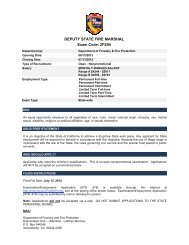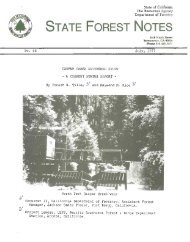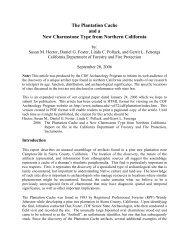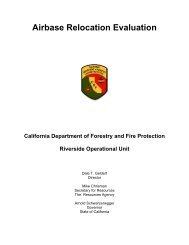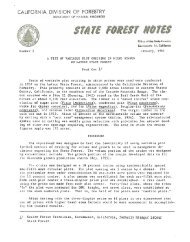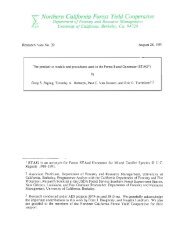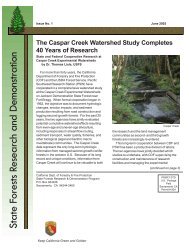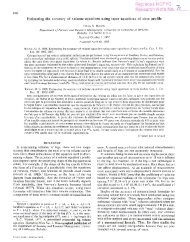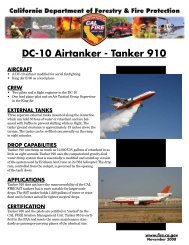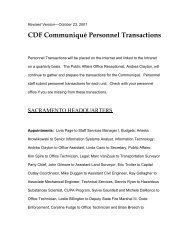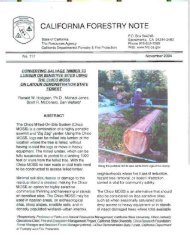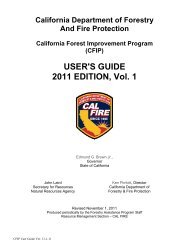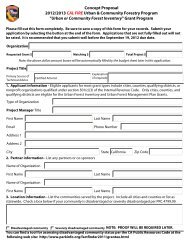Communiqué - Cal Fire - State of California
Communiqué - Cal Fire - State of California
Communiqué - Cal Fire - State of California
You also want an ePaper? Increase the reach of your titles
YUMPU automatically turns print PDFs into web optimized ePapers that Google loves.
“Nearly 85 percent <strong>of</strong> <strong>Cal</strong>ifornia’s average annual<br />
run<strong>of</strong>f is produced from forested watersheds.”<br />
The main conclusions from all the<br />
monitoring completed to date are that<br />
<strong>Cal</strong>ifornia’s water quality-related rule<br />
implementation rate is among the highest<br />
<strong>of</strong> any <strong>of</strong> the Western United <strong>State</strong>s, and<br />
that when properly implemented, the FPRs<br />
are eff ective in protecting water quality.<br />
Monitoring results have also shown,<br />
however, that improvements are needed in<br />
watercourse crossing design, construction,<br />
maintenance and for road drainage,<br />
particularly near stream crossings.<br />
To improve practices on roads and at<br />
stream crossings, there have been several<br />
eff orts over the past fi ve years, including<br />
the development <strong>of</strong> a guidebook on how<br />
to properly design crossings for 100-year<br />
22 Spring 2008<br />
fl ood fl ows and the passage <strong>of</strong> wood and<br />
sediment.<br />
In addition, CAL FIRE and other <strong>State</strong><br />
Resource Agency departments, University<br />
<strong>of</strong> <strong>Cal</strong>ifornia Cooperative Extension, and<br />
pr<strong>of</strong>essional forestry organizations have<br />
sponsored numerous workshops for<br />
foresters, landowners, and regulators on<br />
how to address road problems and how<br />
to properly design and construct roadstream<br />
crossings.<br />
Continued monitoring will help us<br />
determine whether these training eff orts<br />
have achieved our goal <strong>of</strong> water quality<br />
protection through improved practices<br />
near watercourse crossings, reducing<br />
sediment input into fi sh-bearing streams.<br />
The fi nal reports for the Hillslope Monitoring<br />
Program and the Modifi ed Completion Report<br />
Monitoring Program are available online at:<br />
• www.b<strong>of</strong>.fi re.ca.gov/pdfs ComboDocument_8_.pdf<br />
•www.b<strong>of</strong>.fi re.ca.gov/pdfs/MCRFinal<br />
Report_2006_07_7B.pdf<br />
Other MSG monitoring reports and information<br />
are available at:<br />
•http://www.b<strong>of</strong>.fi re.ca.gov/board/msg_geninfo.asp.<br />
The crossing design guidebook is available at:<br />
• http://www.fi re.ca.gov/rsrc-mgt_content/<br />
downloads/100yr32links.pdf.<br />
above: Clay Brandow, CAL FIRE, leads Forest Practice<br />
Rules Implementation and Eff ectiveness Monitoring<br />
training for the CAL FIRE Nevada-Yuba-Placer Unit<br />
foresters near Georgetown.




